David Hufton invited me to join him on a photo trip to the south coast of NSW based around Mystery Bay near Narooma. This is country that I am not very familiar with and it was a great opportunity to see some wonderful country at a relaxed pace allowing plenty of time for photography.
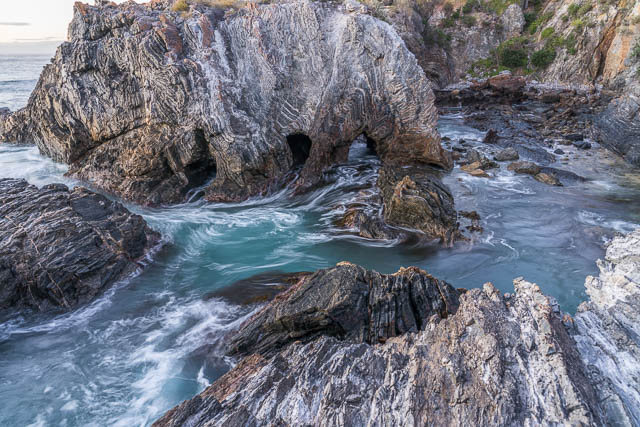
I met David and travelled in his car down the coast. We eventually reached the town of Narooma where we called into the tourist office. One brochure we got which was very useful was on sites of geological significance in the area. From Narooma it was only a few more kilometres to Mystery Bay. We then drove to the campground and set up our tents. David said that the campground can get very full in summer, but on our visit it was nice and quiet.
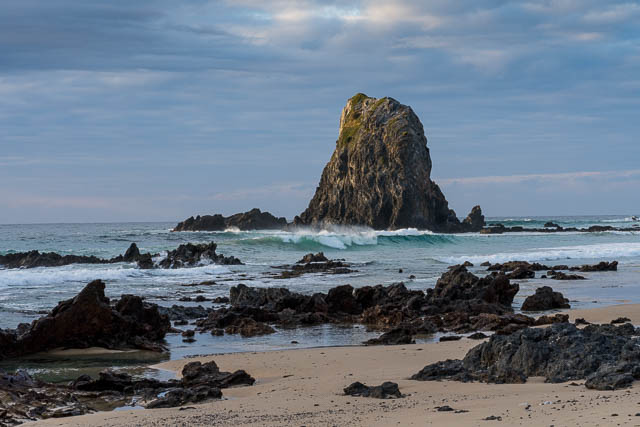
Mystery Bay is an interesting place with a fascinating history. As its name says, there is a mystery here. It is the story of a visiting geologist, Lamont Young and 4 companions that vanished without trace in 1880.

Looking out from the campground we could see a distant Montague Island with its lighthouse.

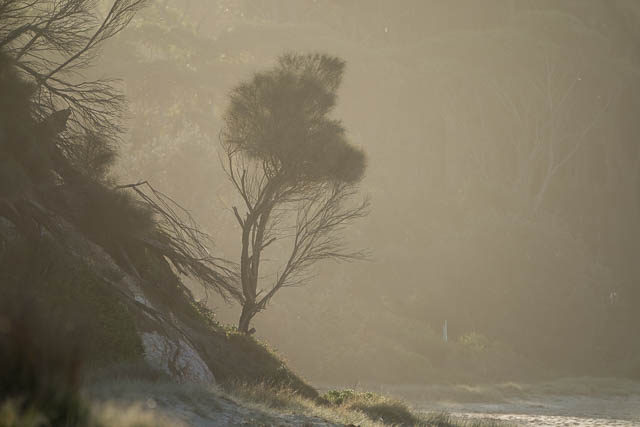

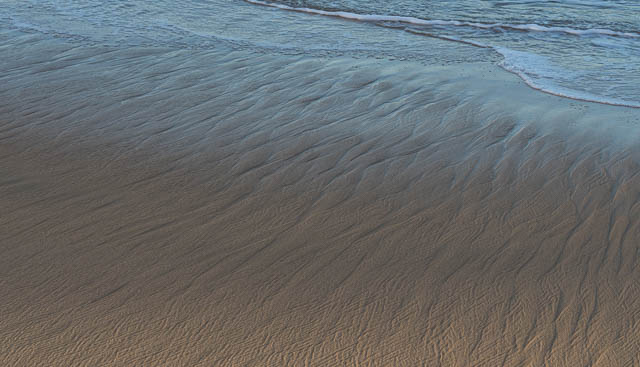
We first visited the beach at Mystery Bay. We could see some interesting rock formations and sea caves. We stayed on the beach till dusk. This would be a good place to return to for sunrise.
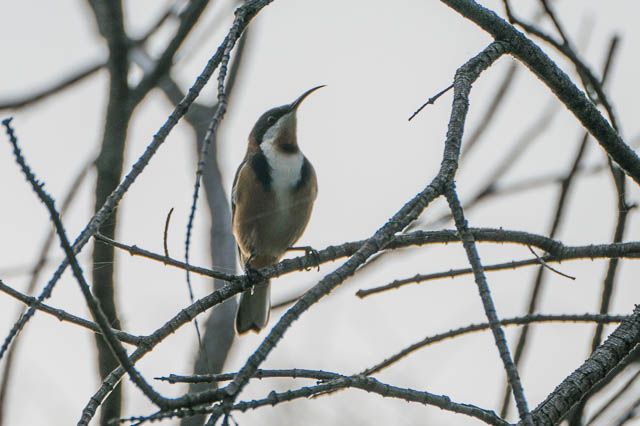
Next morning we woke up early and set off for the short walk from the campground back to the beach. It was a pleasant sunrise.

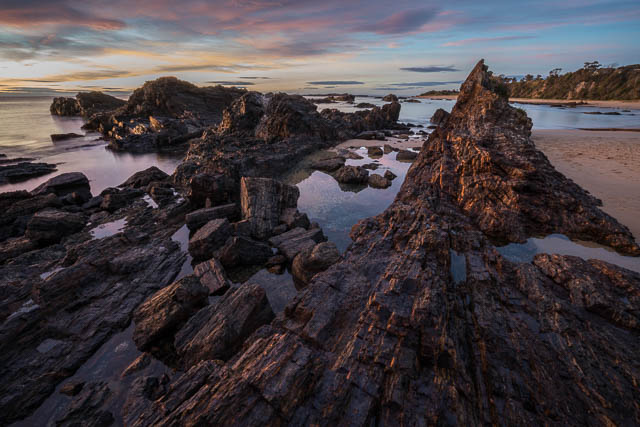
After breakfast back at camp, we then explored some of the coast closer to the far ends of the campground. What we found was amazing – sea stacks, arches and caves. We chose a good vantage point where we would set up our cameras the next morning.
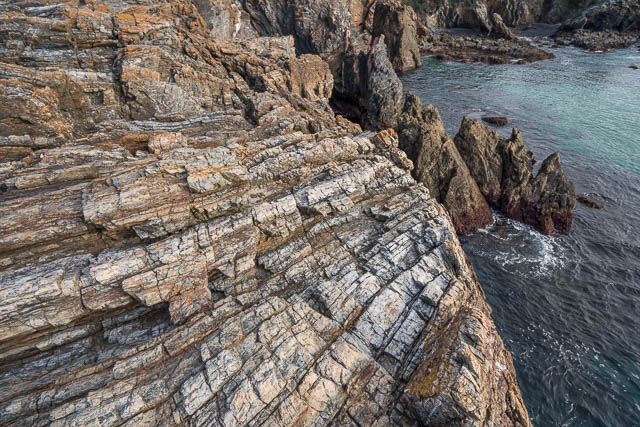
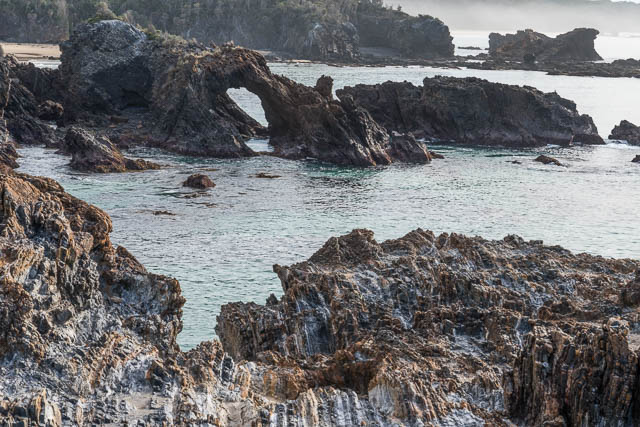
We then explored the next beach to the north – Billys Beach in Eurobodalla National Park. It was hidden in a small sheltered cove. We crossed the next headland to the north – more beaches stretching far to the north.
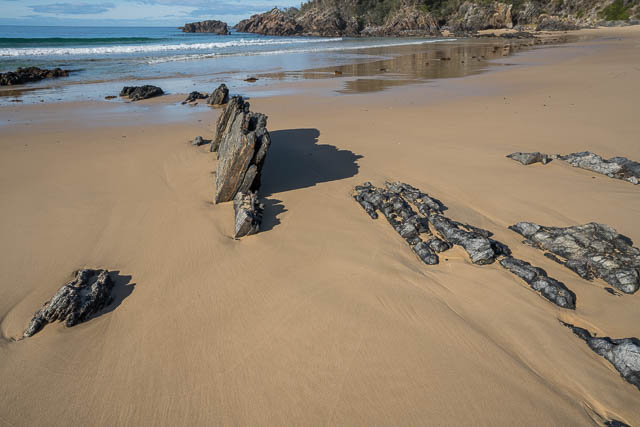


We then went back to the campsite and headed into Narooma. We drove across the bridge and then set off along the boardwalk on the north side of the harbour. This ws supposed to be a good place to see stingrays.
as we walked along we saw something moving in the water. A stingray? Np – it turned out to be a young seal.
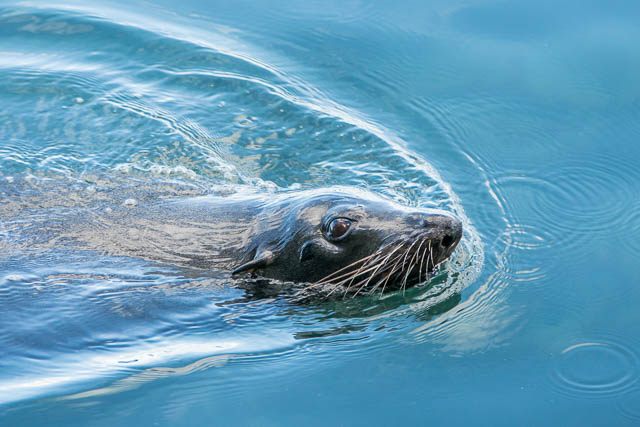
Further along, we did see a rather large stingray cruising past. Then more of them. At one place there were three swimming close together.

Further along, near the breakwater, it was got to pause and look at the birds. Pelicans and Cormorants sitting in the sun, and terns and gannets diving for fish.
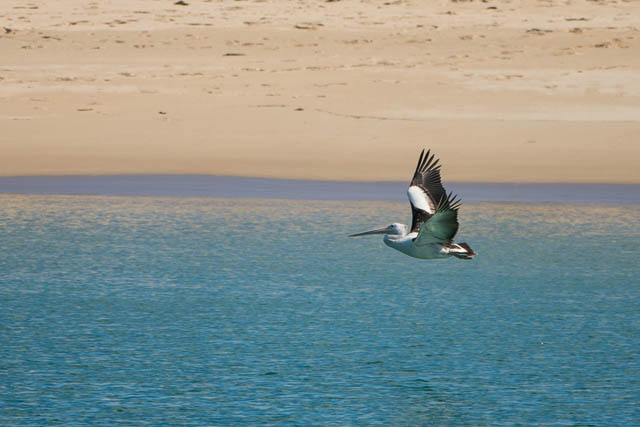
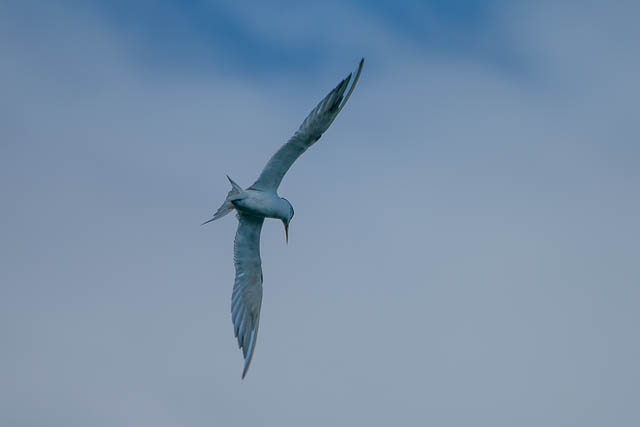
High above were a pair of Sea Eagles.

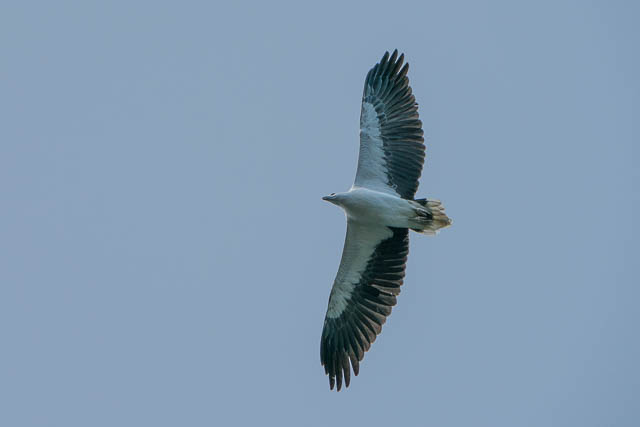
Across the bay, we could see more seals, so that is where we headed next. The seals seemed to be asleep.
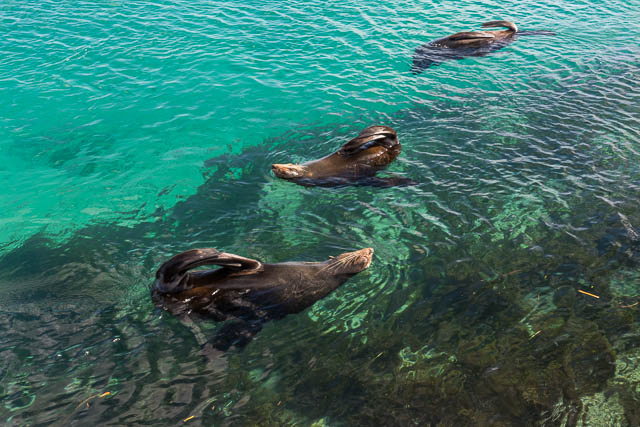
Nearby was a nice natural arch.
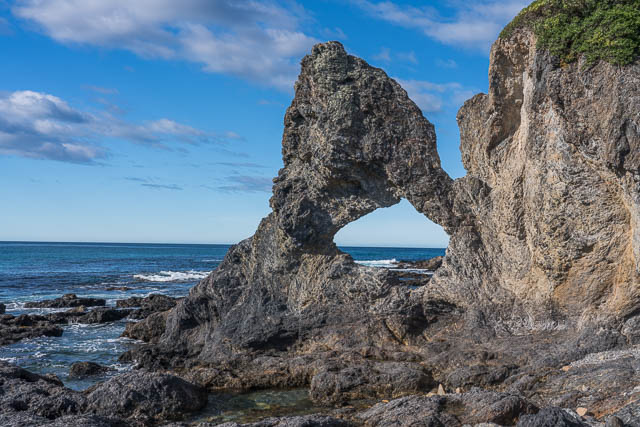
The next feature we visited was a famous set of sea stacks to the south of Narooma called Glasshouse Rocks. This was reached via a track from the cemetery.

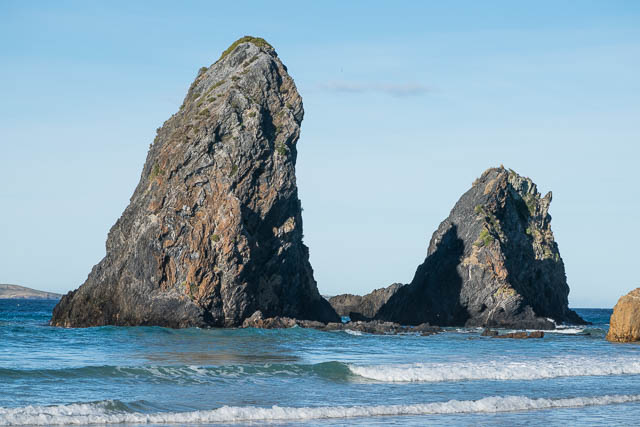
It was an interesting place. We would return for a sunrise shoot in tow mornings time. On the beach I walked past without noticing small bird browsing for food in the sand. David spotted it and pointed it out to me. It took me a while to see it – it was so small. Looking at my bird app, we found it was a Red Capped Plover.
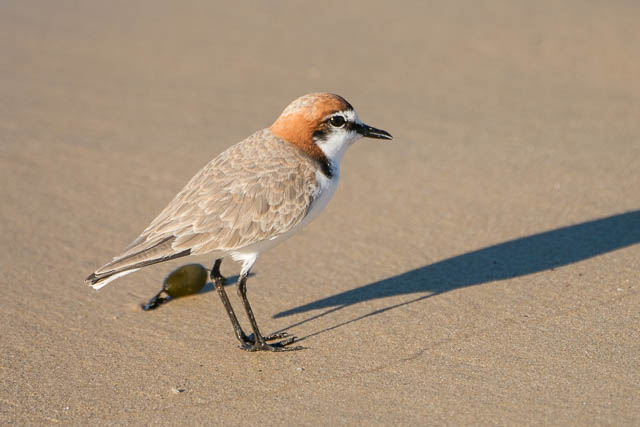
There were also many other interesting rock formations around.
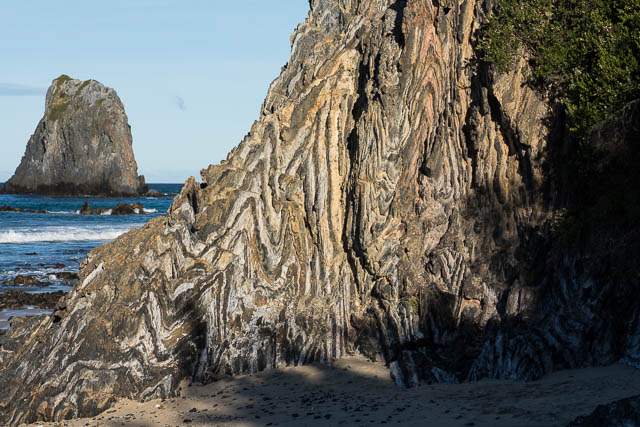
We then headed into Narooma to have some of the local fish and chips for dinner. Next morning, we got up for dawn again, and this time headed out to the cliffs near the campground. It was a beautiful place to watch the sun come up.


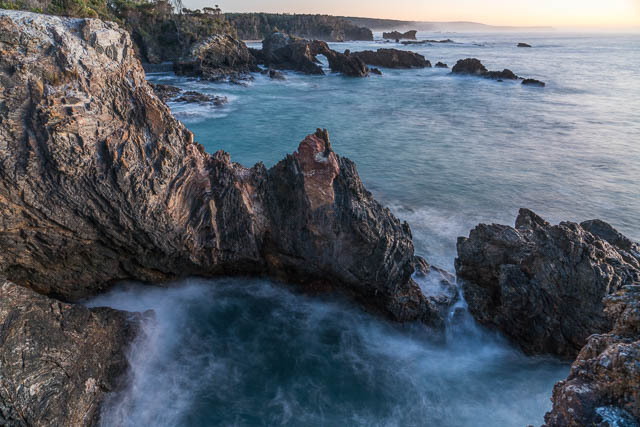
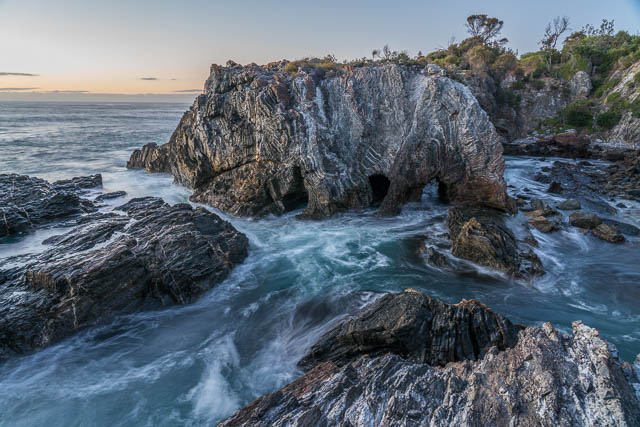
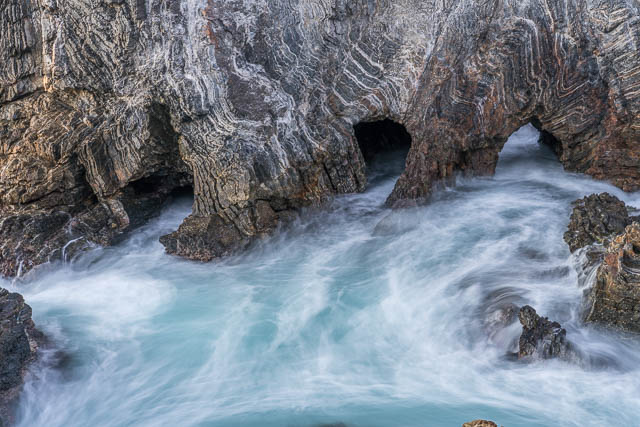
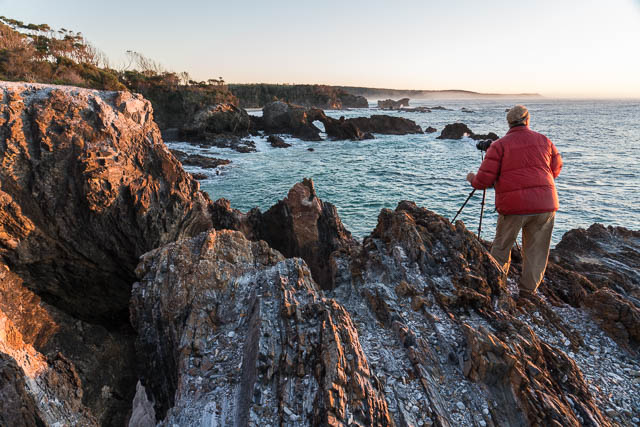
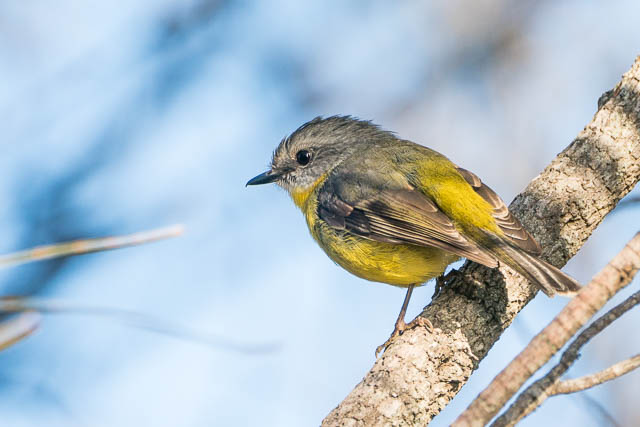
Our plan, then was to head south to Tilba Tilba and climb Mt Dromedary. We set off along the track behind Pam’s Store and found that the track was closed due to unstable trees. After a call to the local NPWS office we thought we should not proceed, so instead made do with Devonshire Tea at Central Tilba. We next headed down to Little Lake – on the coast near Tilba Tilba. More birds and a beautiful long beach.
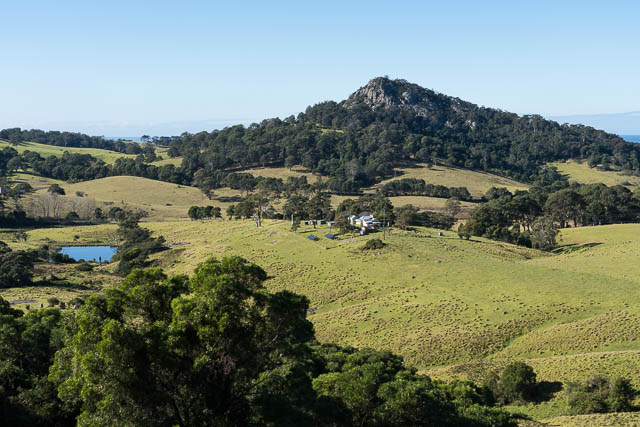

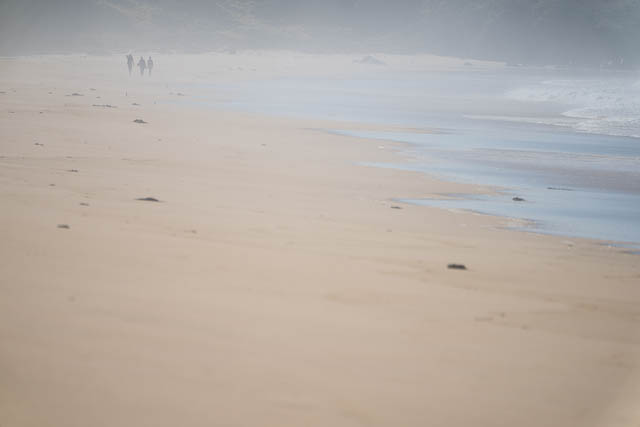
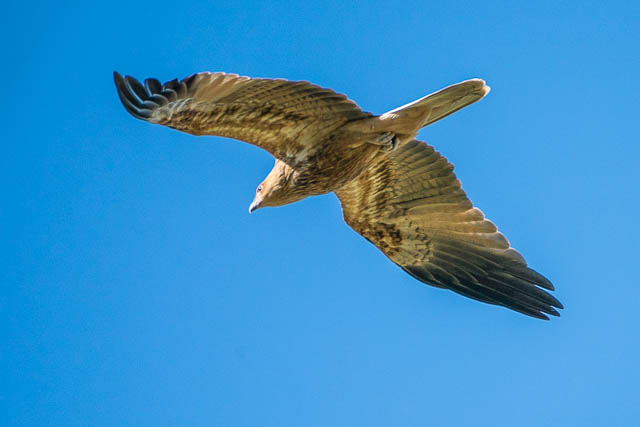
In he far distance to the south we could see more sea stacks. These were not mentioned in the geology brochure – as they were outside the Eurobodalla Shire.
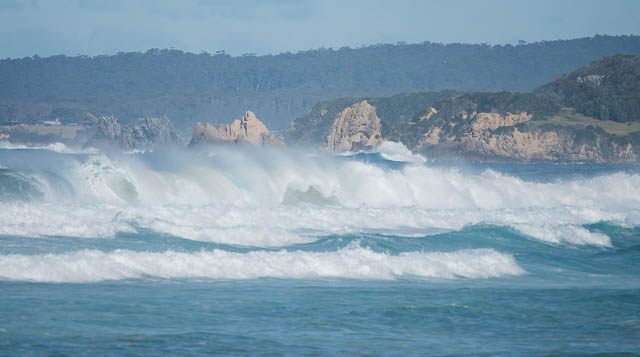
We then headed south towards the area of sea stacks. On the way, we topped for lunch at beautiful Wallaga Lake.
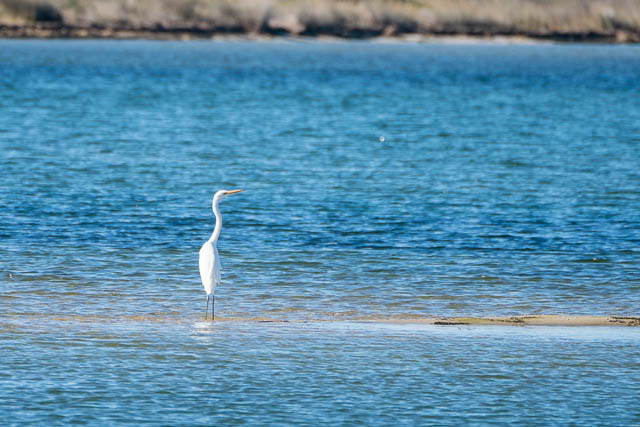
The main stacks turned out to be Camel Rock.
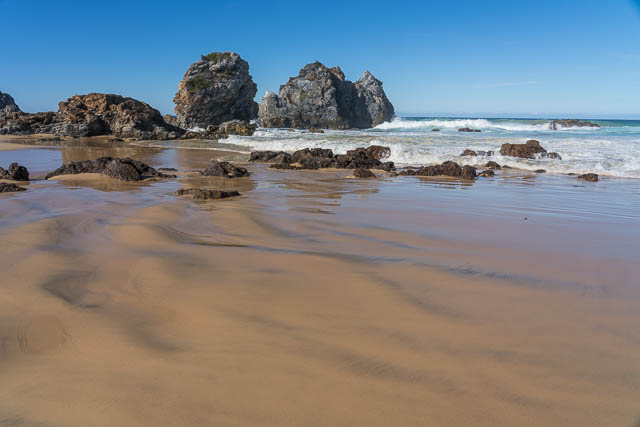
In the same area were a lot more sea stacks, including one, Horse Rock, with a large natural arch.
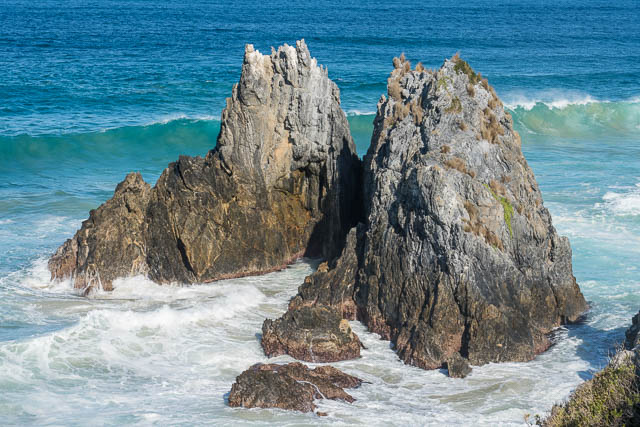


We then headed back to the campground at Mystery Bay. For our afternoon shoot- we returned to the cliffs near the campground. It was a good place to watch the birds dive for fish.
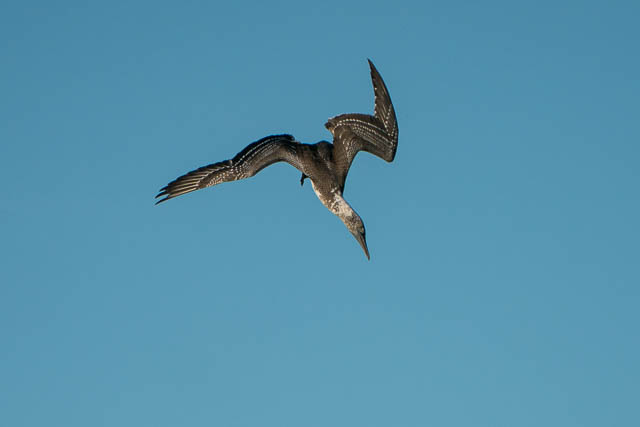
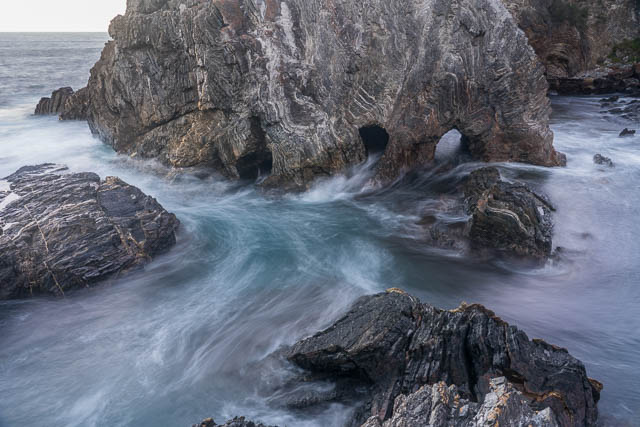
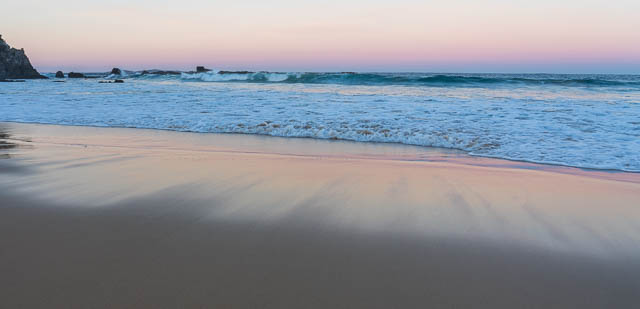
Next morning, another early start. We headed back to Narooma and the cemetery and walked down in the dark to the beach near Glasshouse Rocks.
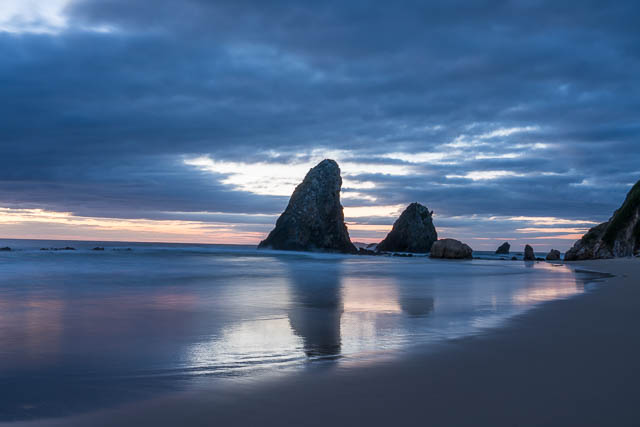
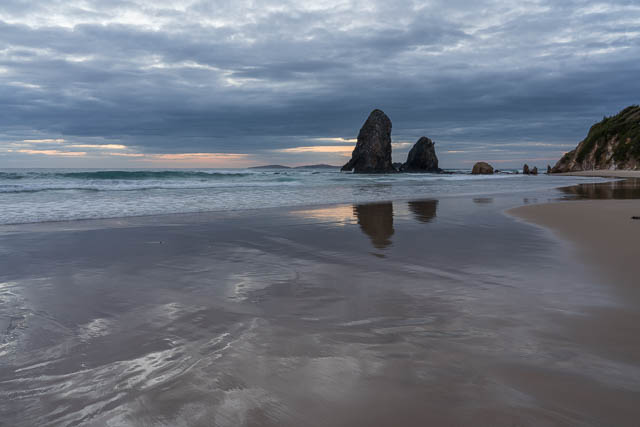

The rising sun was obscured by a cloud layer at first. But we had plenty of time and waited till the sun eventually appeared.


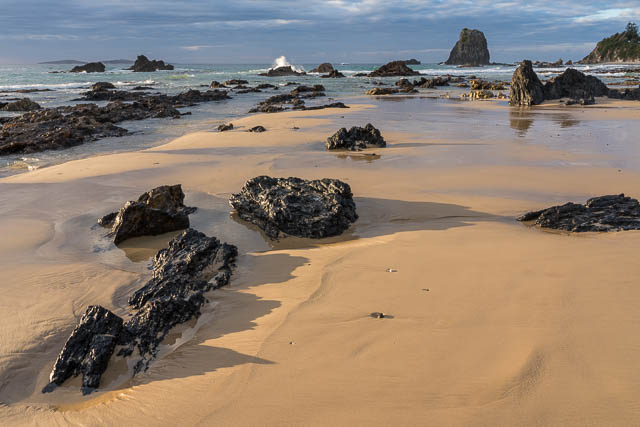
It was a nice morning.
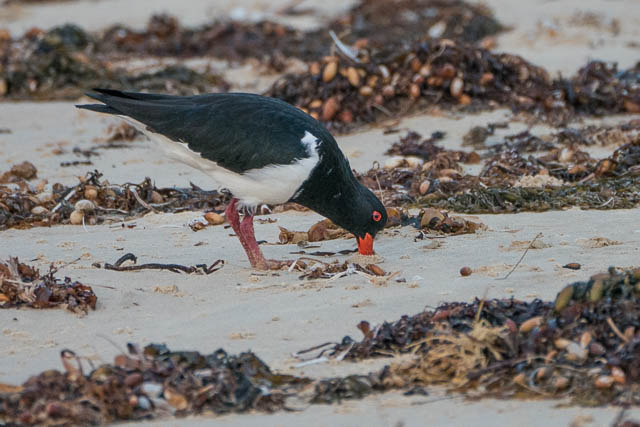
We then headed back to our campsite for breakfast. We then packed up. Before returning back to towards Sydney, we visited another part of Eurobodalla National Park – Bodolla Head. This was a short drive through beautiful Spotted Gum forest.
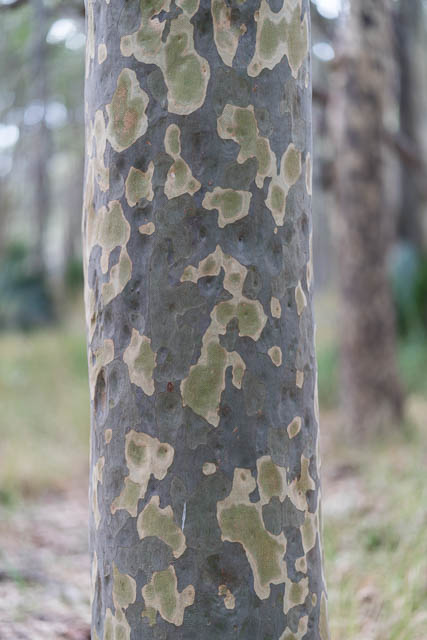
More beautiful coast! We walked from the headland down to a long beach. Hidden below was a small cove. The area was a protected area to allow plovers to breed.
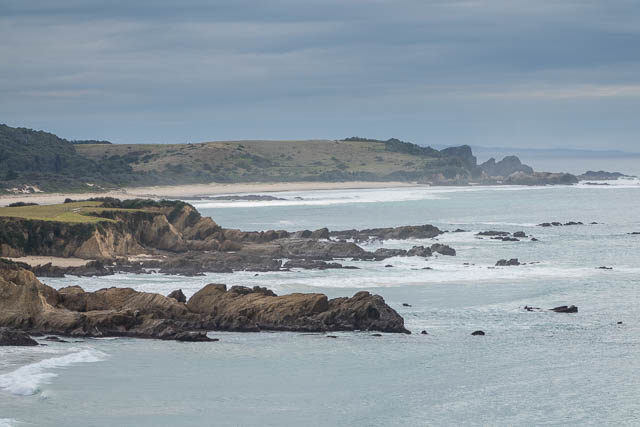

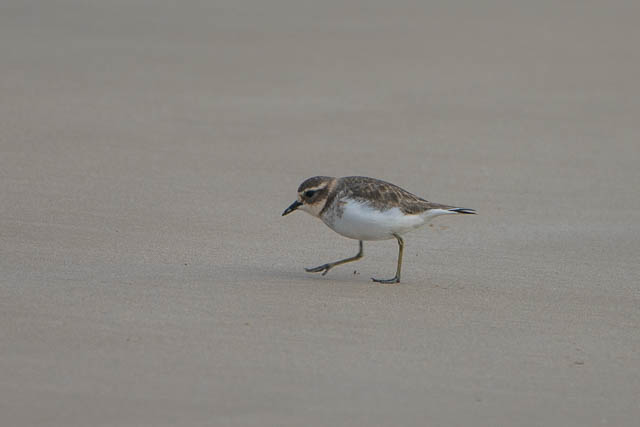
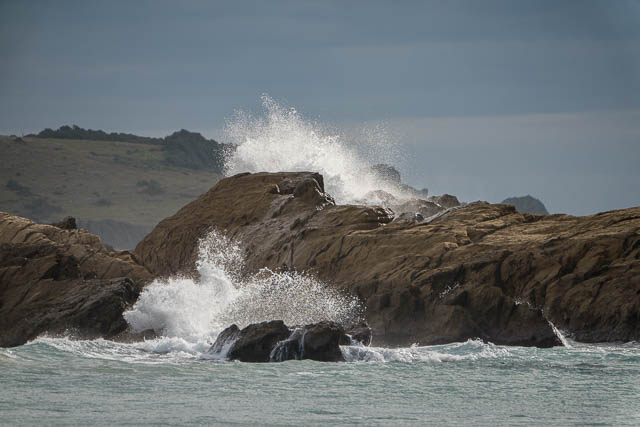
We then headed to Narooma and investigated the north end of Surf Beach which the geology brochure indicated we would find pillow lava. If it was there then it was not really obvious.
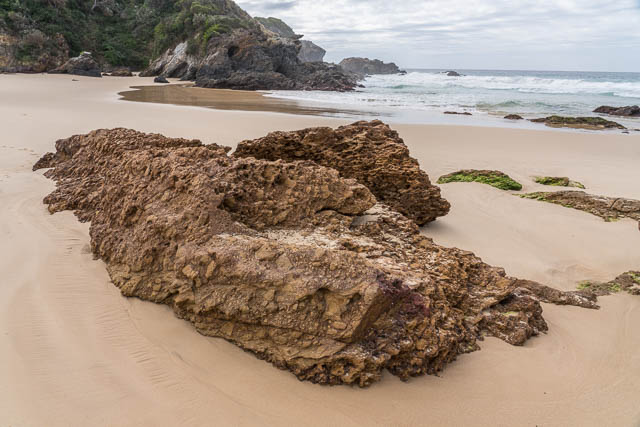
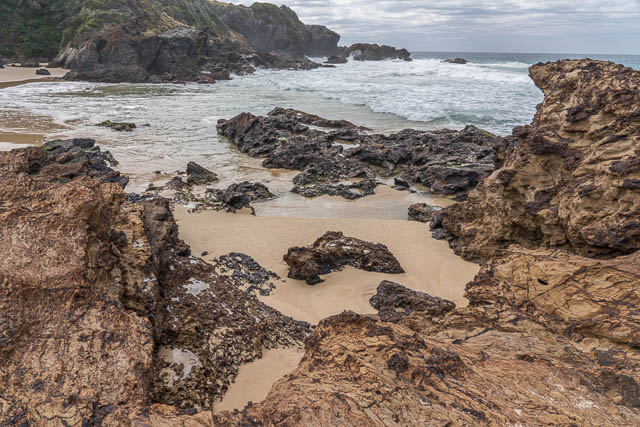
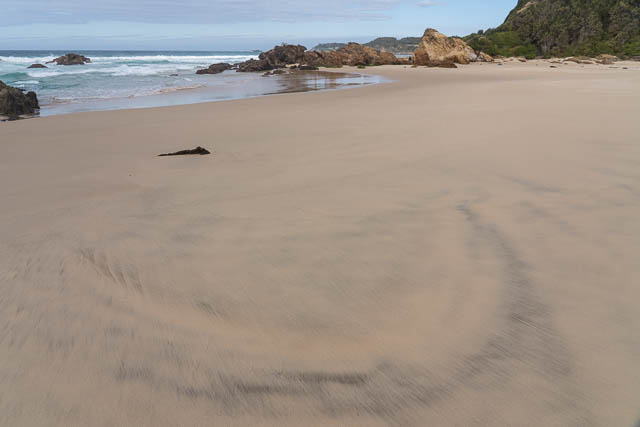
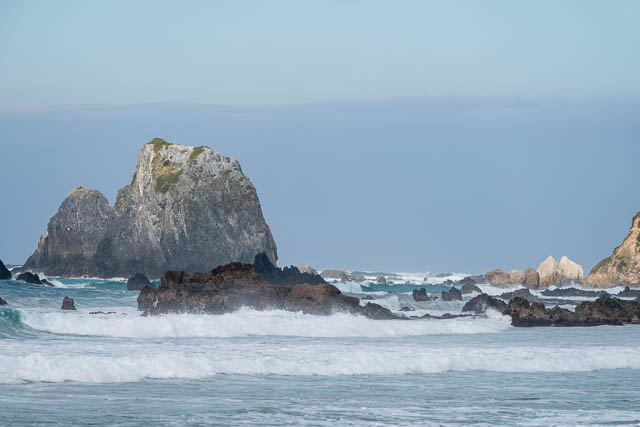
Then we drove north. Slowly towards Sydney. Our intention was not to go too far. We wanted to see another headland – Bingi Bingi Point. This was another area of geological significance. It was a beautiful spot to spend the afternoon. The whole headland is criss-crossed by dykes.
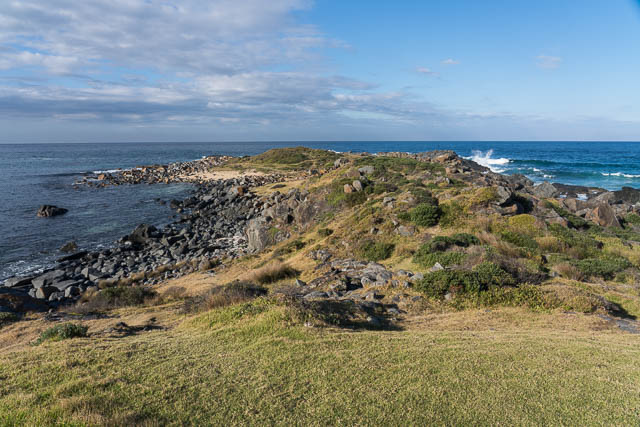

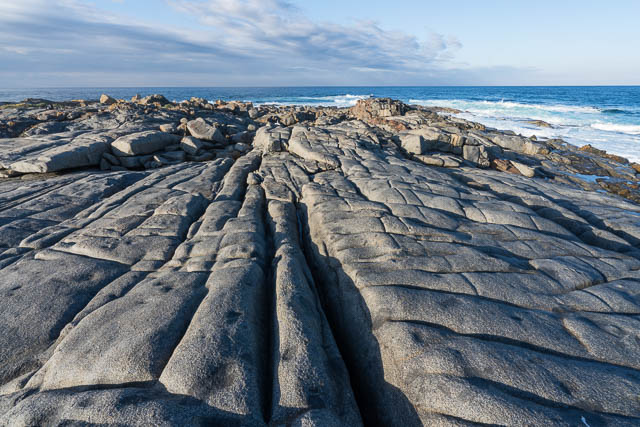
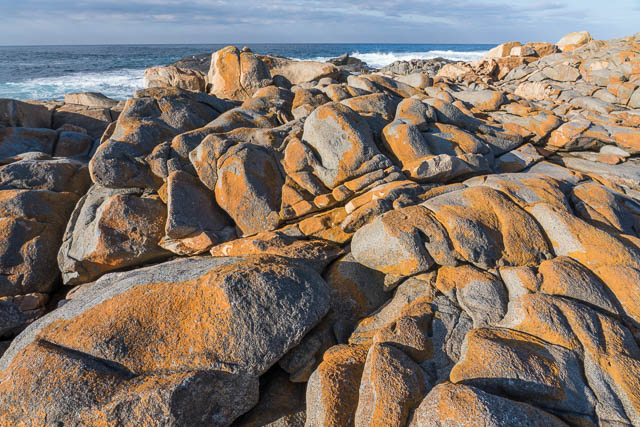
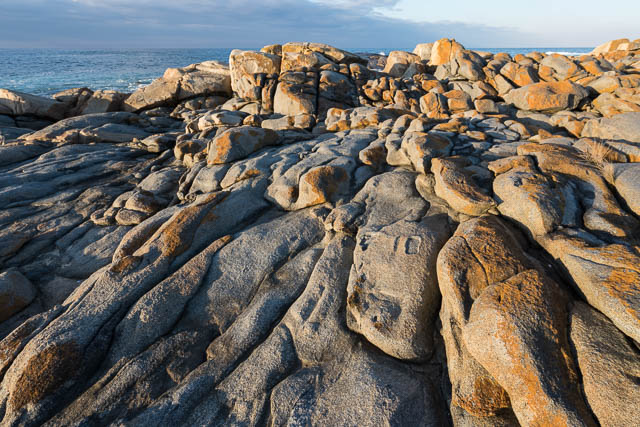

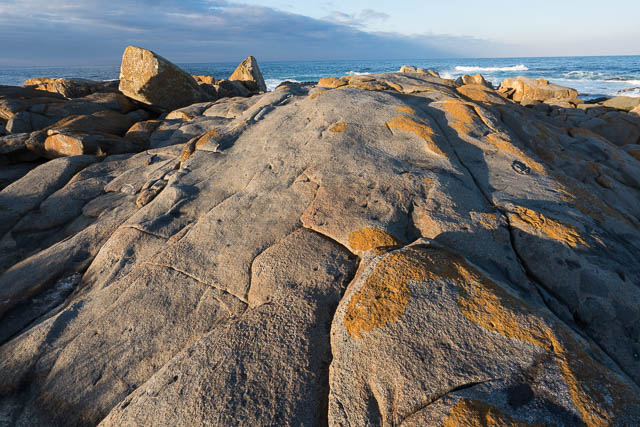
We returned there for sunrise.
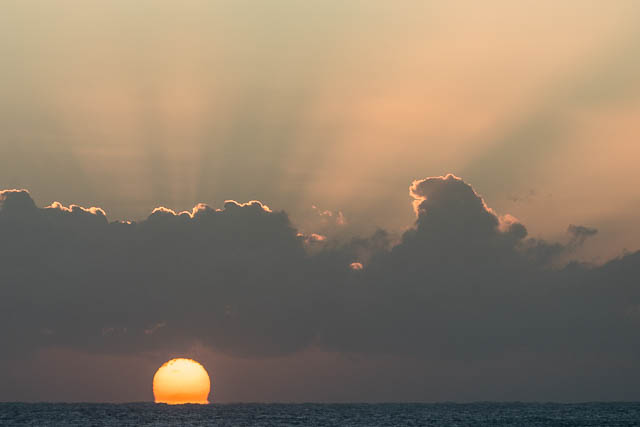
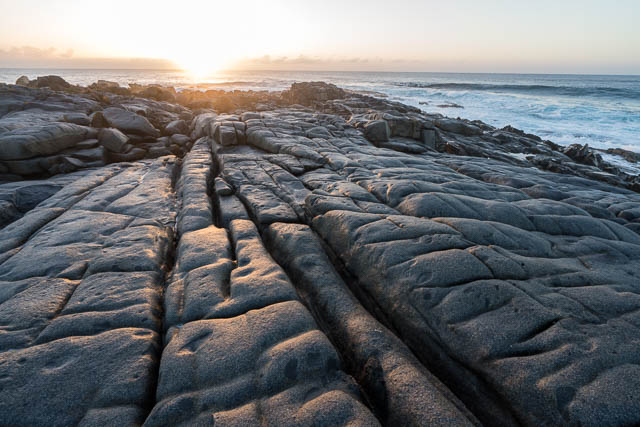
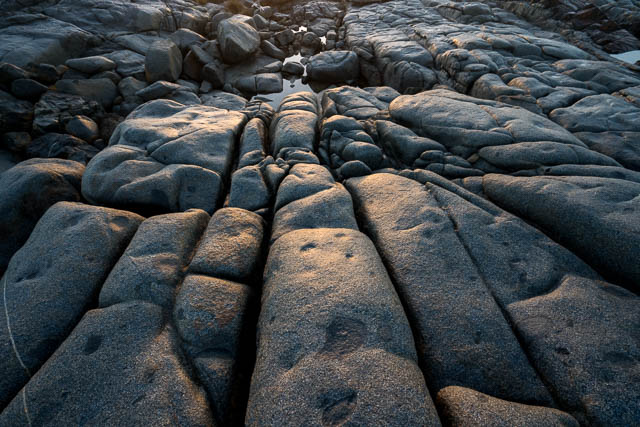

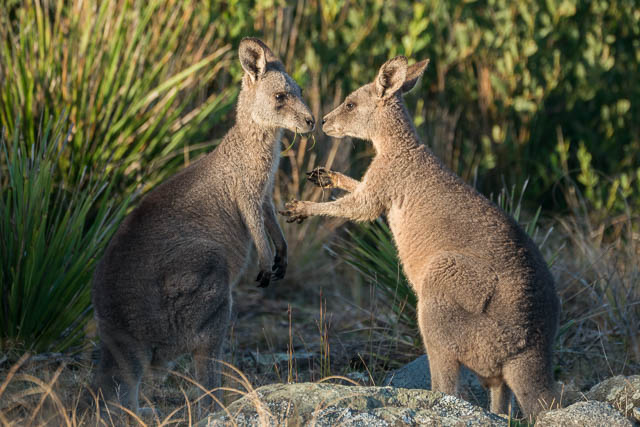
Then we went to another spot a little to the north – Millimburra Point. Here the headland is rent by large zawns.
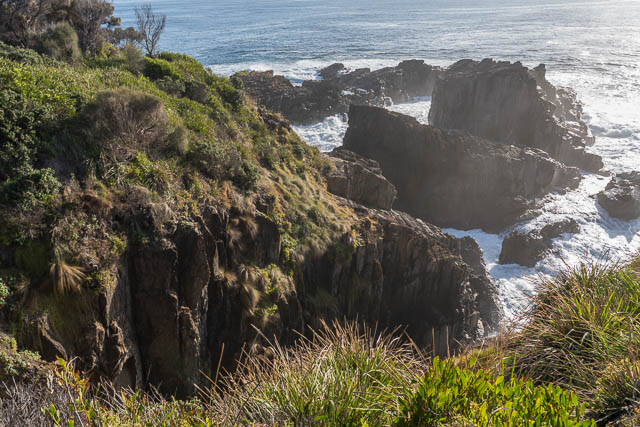
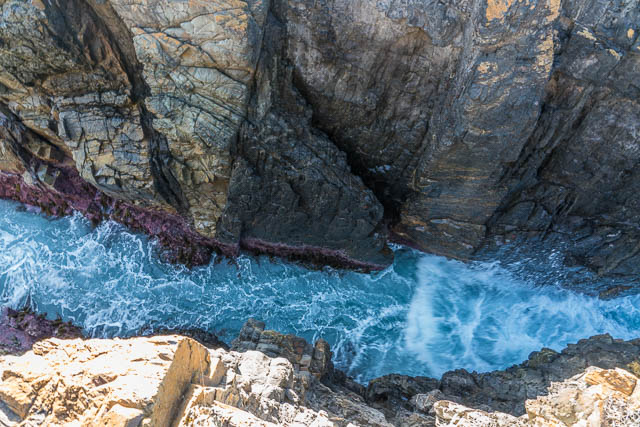

It was then time to leave the area. This had been a very nice trip to a beautiful part of the World. Thanks to David Hufton for inviting me along.

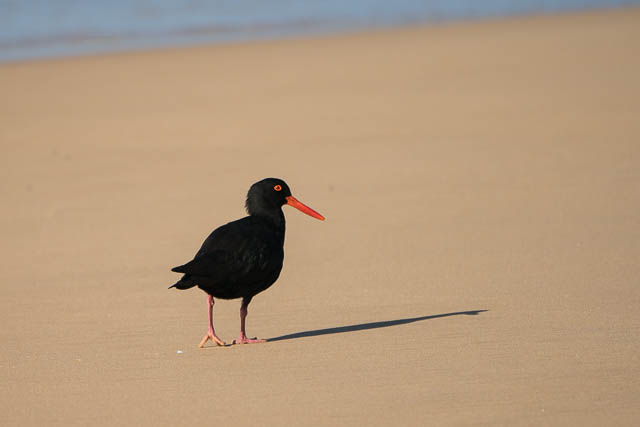
More photos of the trip are online here on my website.
